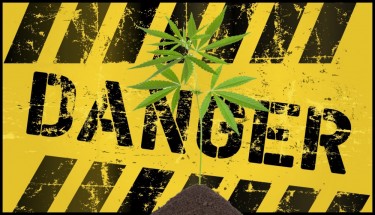Is It Time to Change the Way We Identify Cannabis?

Sativa & India No Longer a Valid Metric of Differentiation!
Most people will tell you that there are two main “types” of weed on the market – Sativa & Indica. Some other people will tell you that there are in fact THREE main types of cannabis, which include Ruderalis.
This is all true – except maybe not as “accurate” as one would imagine.
You see – Sativas are generally identified by their tall lanky stalks and thin leaf patterns whereas Indicas tend to be shorter, bushier with fatter leaf.
Ruderalis we don’t really smoke as opposed to use it for its genetics to create autoflowering cannabis strains.
However, a recent study looked into the chemical compositions of Sativas & Indicas in a world of Hybrids – which the vast majority of the bud that you find in a dispensary is – and found that the distinctions between the plants based on these “observations” are simply not accurate.
The main classifications used in the modern Cannabis industry parlance are “indica”, “sativa”, and “hybrids”. Sativa plants are described as tall with narrow leaves and lighter density buds, allegedly producing high levels of THCA, and therefore have uplifting and stimulating psychedelic effects after consumption. Indica plants are described as short with broad leaves and dense buds, and produce high levels of both THCA and CBDA believed to produce a relaxing effect (Clarke & Merlin, 2013; McPartland, 2017; Vergara et al., 2016). Yet, the associations between these multiple traits have not previously been researched. - Source
In other words, there is no scientific evidence to suggest that Sativas is a head high and Indicas are body highs. It turns out that on a chemical level, both Indicas and Sativas share the same precursor that produces the same cannabinoids – meaning there is virtually no difference between them from that perspective.
Of course, this doesn’t mean that there aren’t physical distinctions between the two – the scientists are simply suggesting that there is no scientific metric behind the differentiation. That it’s more “cultural” than it is scientific.
Why does this matter?
I’ll let the scientist explain it in their words – and then explain it to the “common person” who doesn’t speak nerd.
The colloquial naming convention of “indica” and “sativa” do not correspond to the scientific subspecies with similar names. Furthermore, these common distinctions do not reflect evolutionary relationships (Sawler et al., 2015; Schwabe & McGlaughlin, 2019; Vergara et al., 2016). This misidentification can be particularly problematic for medical patients who are depending on reliable and consistent products.
In other words, without reliable means of identifications, the possibility of streamlining cannabinoid treatment becomes problematic.
When it comes to medicine – you want to be as precise as you possibly can be and under the current means of identifying strains there simply isn’t the precision required by the medical community.
However, properly being able to identify the desirable traits prior to flowering also has its applications within the commercial side of things;
Many commercially important traits are expressed at maturity, and if breeders could predict their late-stage expression through correlations among these traits earlier during development, selection could be made sooner, accelerating breeding cycles. Also, if traits early in the development allowed for distinguishing between sexes, males could be culled before pollen production and potential female pollination. This is important because females would undesirably divert energy to seeds instead of cannabinoids after being pollinated (Clarke & Merlin, 2013).
In other words, if the researchers can prove a correlation between physical traits of the plant within the vegetative stage – and how it translates into the flowering stage (specifically in relation to sex) – you’d be able to remove males before they have a chance to pollenate.
This could mean lower chance of the crops getting pollenated which would increase the value per yield, speed up breeding times and help create more “cannabinoid specific strains”.
All very valuable stuff!
What did the researchers discover?
While I’m not going to go into the nitty gritty of the science behind what they did – I’ll break it down real quick.
The researchers set out to find whether plant height, lead shape and size, nodal size, branches, stalk diameter, cannabinoid profile, etc – all related to each other in some way.
If they could discover correlations between these data points – they would be a step closer to providing a more scientific approach to labeling plants.
Unfortunately, for the vast majority of the characteristics they researched, it seemed that they all evolved independently and things like; environment and ancestry played a more critical role in the expression of the plant during the flowering stage.
Therefore, our study also suggests that common assumptions about associations between leaf shape and chemistry may exacerbate the misnaming problems of Cannabis varieties by the industry (Sawler et al., 2015; Vergara et al., 2016). Given the lack of association between cannabinoids and other morphological traits, the accepted standards for categorizing Cannabis types by the industry are deeply flawed because their naming convention is based on sets of traits that could be disassociated to each other. Additionally, other studies have shown that name is not indicative of cannabinoid potency or overall chemical composition (Elzinga et al., 2015), and that varieties are grouped based on reported flavors and aromas, regardless of genetic relationships misclassifying closely related individuals (De la Fuente et al., 2020).
In other words, these classifications are far more subjective than objective. From a chemical perspective this could mean that you may be buying a “sativa” hybrid which has little to no difference than an “indica hybrid” – except maybe in price.
What do we conclude?
In the end, the researchers only scratched the surface of this premise and we’re not even remotely close to discovering the phenotypical characteristics that correspond with cannabinoid profiles, but they have proven beyond a shadow of a doubt that our current system of identifying cannabis plants are very limited..
“The fact that most of the phenotypic traits are not genetically correlated has significant implications for both Cannabis breeders and commercial growers. If these traits are not linked, as previously thought, then it is possible to select for new combination of traits when breeding for novel varieties. This expands the possibility of generating varieties with a unique combination of traits providing unforeseen medicinal and industrial value. Future breeding can be done to maximize combinations of these traits.“
See N.I.D.A – why don’t you invest in these types of studies?
WHO IS DOING CANNABIS STUDIES, READ MORE...
HOW THE NIDA BLOCKS MARIJUANA RESEARCH EVERY YEAR?
OR..
THE DANGEROUS BIAS IN MARIJUANA STUDIES DONE BY THE NIDA!








